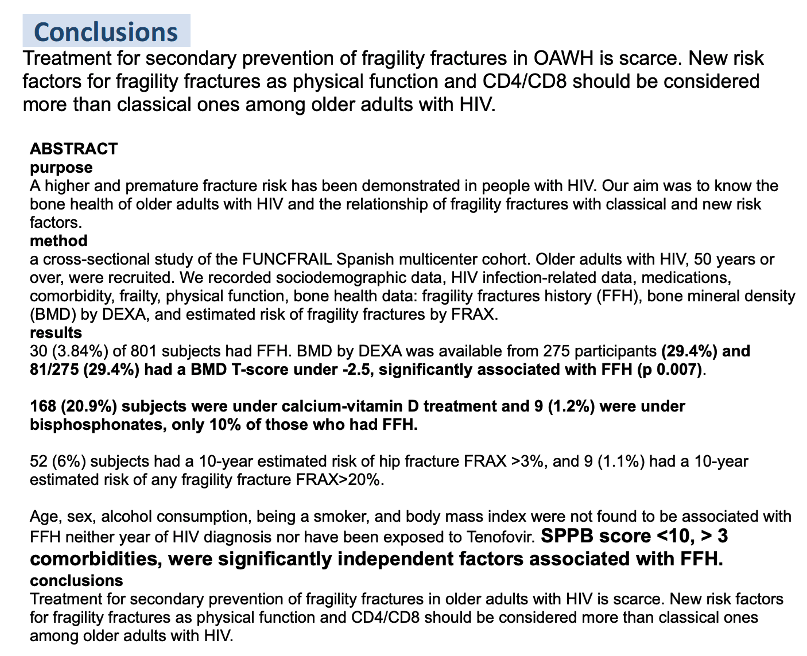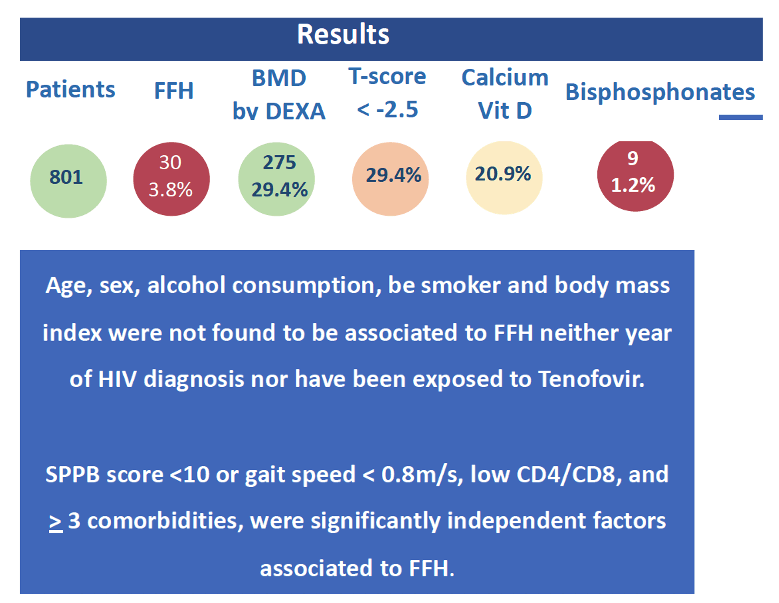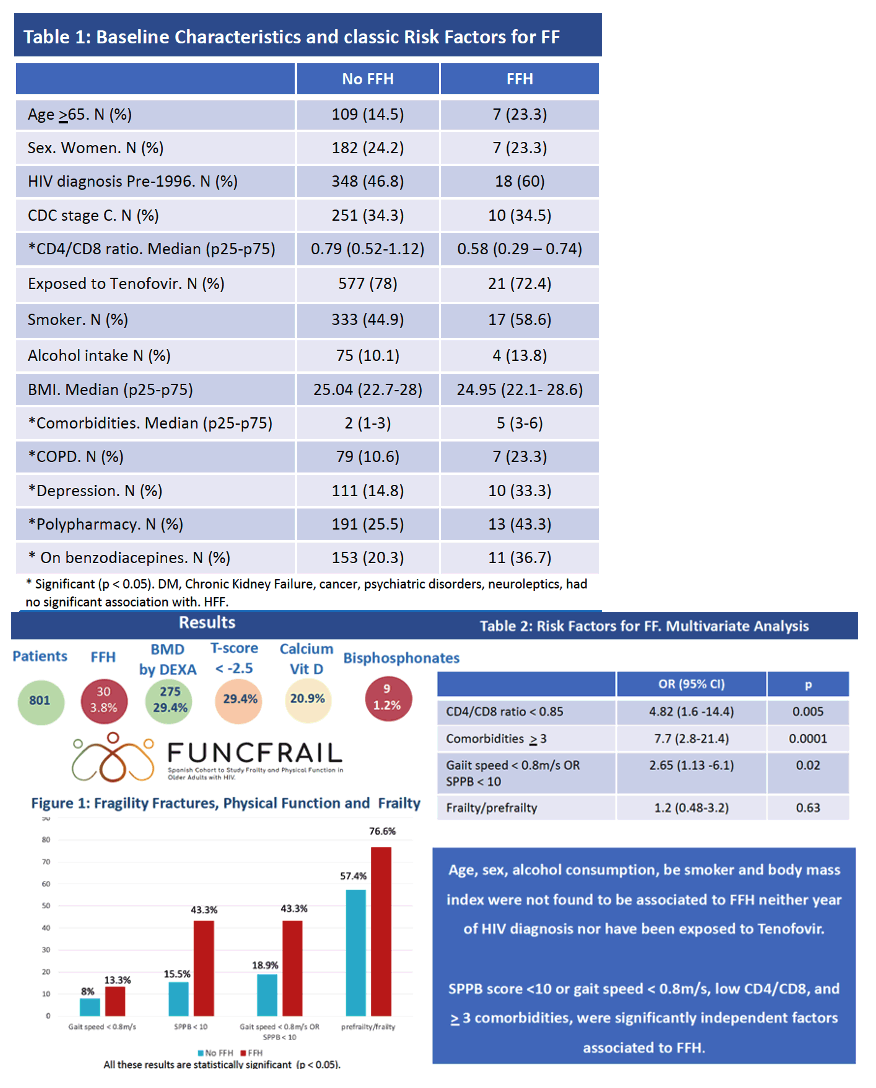 |
 |
 |
| |
Classic Fracture Risk Factors May Need Replacing in Older People With HIV
|
| |
| |
EACS 2023, October 18-21, 2023, Warsaw
Mark Mascolini
Traditional fragility risk factors like gender, alcohol, smoking, and body mass index may not help predict broken bones in older people with HIV, according to an 801-person analysis by researchers in Spain's FUNCFRAIL Study Group [1]. Instead they found that CD4/CD8 ratio, comorbidities, and gait speed or overall physical performance predicted fragility fractures in this population.
Fragility fractures pose a greater risk to older people and to those with HIV. The FUNCFRAIL Study Group wondered how well-or poorly-traditional fragility fracture risk factors apply to older people with HIV. FUNCFRAIL is the Spanish Cohort to Study Frailty and Physical Function in Older Adults With HIV.
In this cross-sectional study of the multicenter FUNCFRAIL cohort, researchers recruited people 50 and older and collected sociodemographic data, HIV-related data, and data on medications, comorbidities, frailty, physical function, fragility fractures, bone mineral density by DXA scan, and estimated risk of fragility fracture by FRAX.
Of the 801 study participants, 30 (3.8%) had a fragility fracture history and only 9 (1.1%) were taking bisphosphonates. A nonsignificantly higher proportion with than without a fragility fracture history were 65 or older (23.3% vs 14.5%) and similar proportions were women (23.3% and 24.2%).
People with a fragility fracture already on their chart had a significantly lower median CD4/CD8 ratio than people without a fracture history (0.58 vs 0.79), a significantly higher median number or comorbidities (5 vs 2), a significantly higher proportion with chronic obstructive pulmonary disease (23.3% vs 10.6%), a significantly higher proportion with depression (33.3% vs 14.8%), a significantly higher proportion with polypharmacy (43.3% vs 25.5%), and a significantly higher proportion taking benzodiazepines (36.7% vs 20.3%) (P < 0.05 for all differences). People with and without a fracture history did not differ by use of tenofovir disoproxil, smoking, alcohol intake, or body mass index.
A significantly higher proportion of people with versus without a history of fragility fracture did significantly worse on several physical function measures: Gait speed below 0.8 m/sec, 13.3% vs 8%; Short Physical Performance Battery (SPPB) score below 10, 43.3% vs 15.5%; slow gait speed or SPPB below 10, 43.3% vs 18.9%; prefrailty or frailty, 76.6% vs 57.4% (P < 0.05 for all differences).
Multivariate analysis identified three independent predictors of fragility fractures at the following odds ratios (OR) (and 95% confidence intervals):
- CD4/CD8 ratio less than 0.85: OR 4.82 (1.6 to 14.4, P = 0.005)
- 3 or more comorbidities: OR 7.7 (2.8 to 21.4, P = 0.0001)
- Gait speed less than 10 or SPPB less than 10: OR 2.65 (1.13 to 6.1, P = 0.02)
Because bone experts offer no reliable way to prevent a second fragility fracture, the FUNCFRAIL investigators urge clinicians to consider nontraditional risk factors for broken bones-declining physical function, more comorbidities, and low CD4/CD8 ratio-in older people with HIV infection.
Reference
1. Branas F, Vergas J, Ramirez M, et al. New risk factors for fragility fractures must be considered in older adults with HIV. EACS 2023, October 18-21, 2023, Warsaw. Abstract eP.B2.043.



|
| |
|
 |
 |
|
|